Explore the top dog care trends shaping 2025 in the U.S. — from smart collars and healthy treats to eco-friendly products that keep your pup happy and thriving.
Top Dog Care Trends Every U.S. Pet Owner Should Know in 2025



Explore the top dog care trends shaping 2025 in the U.S. — from smart collars and healthy treats to eco-friendly products that keep your pup happy and thriving.

There’s a room in the house I don’t go in often. It smells… quiet. Not empty, just full of old things that whisper stories when no one’s around. But today, something was different. The door was open, just a little. A strip of sunlight slid across the wooden floor, and the air smelled like… time. That sounds funny, I know. But we dogs, we smell time. We know what “years ago” feels like with just one sniff. I pushed the door with my nose. Creak. There it was — the box. Cardboard, taped at the edges, sitting like it had waited years for someone to notice. I padded closer. The air hit me all at once. A thousand smells. Worn-out denim. That crinkly paper stuff humans love. Something floral, something warm, something that smelled like her but also… not like her anymore. Like before. Before I was here. I nudged the lid with my snout and it flopped open. Inside were clothes. Photos. A tiny stuffed bear with a missing eye. A leash — not mine — smaller, red, frayed. I sniffed it long and slow, feeling something tug at my chest. This leash held memories. Another dog? Or maybe a life my girl had before me? I curled beside the box, resting my chin on a soft hoodie. It smelled like her. Not now her — but the her who maybe needed someone back then too. When she found me there later, she sat beside me without a word. She reached in and pulled out the little bear. “I used to sleep with this every night,” she whispered. “Before you.” Then she smiled — that teary kind of smile I’ve learned means a lot of feelings at once. She placed the bear back in the box, closed the lid gently, and wrapped her arms around me. “We’re still making new memories,” she said. I wagged my tail. I didn’t understand everything in that box — but I knew one thing: it smelled like love. That night, she tucked the box away in a new spot — inside a lovely memory chest with soft lining and a lid that clicked shut just right. She said it would keep the “smell safe.” I watched from my calming corner, curled in my favorite plush fleece dog blanket (yes, the one she says is softer than her own). Some things are just meant to be kept close.
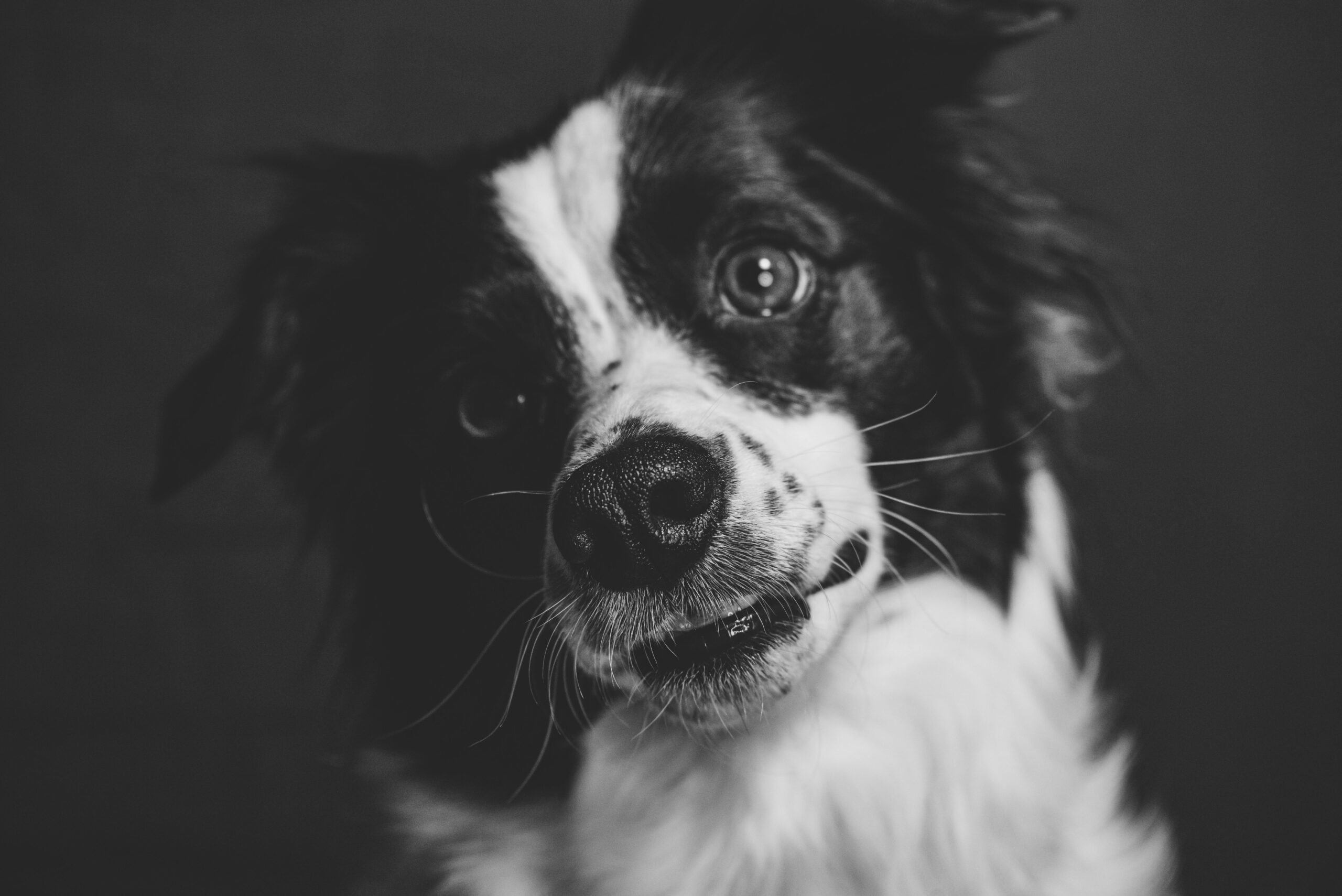
House-training a puppy or caring for a small breed in an apartment? Then you know how important it is to have reliable pee pads. Small dogs may not make big messes, but frequent accidents can quickly ruin your flooring — or your patience! To help, we’ve reviewed the top 5 pee pads for puppies and small breeds available on Amazon. These options are absorbent, leakproof, and sized just right for little paws. 🐾 Comparison Table Product Name Best For Size Type Key Features Amazon Basics Puppy Pads Budget-friendly choice 22″ x 22″ Disposable Leakproof, fast-drying, bulk buy Petphabet Puppy Training Pads Odor control 22″ x 22″ Disposable Deodorizer, thick build OUT! Moisture Lock Pads Maximum absorbency 21″ x 21″ Disposable Quilted core, attractant Glad for Pets Activated Carbon Pads Odor neutralizing 23.5″ x 23.5″ Disposable Carbon layer, neutral scent Pet Parents Reusable Dog Pee Pads (Small) Eco-conscious users Small Reusable Machine-washable, non-slip base 🐶 1. Amazon Basics Puppy Pads 🛒 Buy on AmazonBest for: Affordability and convenience Key Features: 💧 5-layer leakproof design to protect floors and carpets ⚡ Fast-drying top layer prevents puddles and tracking 🧲 Built-in attractant to encourage correct potty placement 📦 Sold in large packs (up to 150) for long-term use ✅ Great for crate training, senior dogs, or travel 🐾 2. Petphabet Puppy Training Pads Buy on AmazonBest for: Odor control and heavy use Key Features: Advanced odor-blocking deodorizer for a fresh-smelling space Thick, quilted layers to lock in more moisture Non-slip base keeps the pad in place during accidents Great for puppies and multi-pet households 🐾 3. OUT! Moisture Lock Training Pads Buy on AmazonBest for: Absorbency and reliability Key Features: Quilted top sheet draws in and holds liquid quickly Attractant built-in to help guide dogs to the pad Reduces leaks and tracking thanks to advanced lock-in core Perfect for small spaces and training new puppies 🐾 4. Glad for Pets Activated Carbon Pads 🛒 Buy on AmazonBest for: Odor control and overnight use Key Features: 🪨 Activated carbon layer neutralizes strong smells 🌊 Polymer core quickly converts liquid to gel 🛡️ Leak-resistant liner and sealed edges 🌃 Ideal for nighttime potty solutions or multiple small dogs 🐾 5. Pet Parents Reusable Dog Pee Pads (Small) 🛒 Buy on AmazonBest for: Eco-friendly, long-term use Key Features: 🌍 Reusable & washable up to 300+ times 🧶 Soft top layer—gentle on puppy paws 🧲 Waterproof backing with non-slip grip 🏡 Works for indoor training, travel carriers, and even under water bowls 🧼 Training Tips for Pee Pad Success Use a consistent spot and time schedule Reward your puppy after correct use Consider a pee pad holder tray for extra stability Keep pads fresh to avoid rejection ✅ Final Thoughts With the right pee pad, housebreaking becomes easier and cleaner — for both you and your dog. Whether you’re raising a pup or helping a senior small breed, these Amazon-approved options provide effective protection and peace of mind.

I was dreaming of the park—the one with the squirrels I never catch and the crunchy leaves I love to roll in—when the sky made a deep, low growl. My eyes flew open. At first, I wasn’t sure what I heard. I lifted my head from the floor and stared at the glass doors. Everything looked the same… but something felt wrong. Then came the flash.Bright. Quick. Angry. My heart pounded in my chest. The next sound was louder. The growl turned into a roar. It shook the ground beneath my paws, and I couldn’t stop myself—I ran. I didn’t care where. I just needed something over my head, somewhere dark, safe, small. I dove under the coffee table. The floor was cold, but I didn’t care. My legs wouldn’t stop shaking. My ears were pinned back so tight it hurt. And my chest? It felt like it might burst. I wanted to bark, to cry, to hide forever. Then… her voice. “Hey, sweet girl,” she said. “It’s okay. You’re safe.” I wanted to believe her. I really did. But the sky kept yelling. She crawled down next to me. Slowly. Gently. Like she knew what I needed. Like she’d been there once, too. Then came the best part. The blanket. The soft one she brought home last week. The one with just enough weight to make me feel like someone’s hugging me—even when they’re not. (Shop Calming Weighted Blanket for Dogs) She wrapped it around me and scooped me into her lap. I didn’t want to move. Didn’t want to be brave. But her arms felt like home. She hummed something. Soft music filled the room. (Shop calming music speaker for dog anxiety relief ) The sky was still angry, but here in her arms, the world felt smaller. Safer. I don’t know when I stopped shaking. I don’t know when the storm passed. All I know is I woke up still in her lap, her hand resting gently on my back, rising and falling with every breath. And I knew:She was my safe place now.No matter what the sky said.

The sky was crying. That’s what Mom always said when it rained, and I never understood it until that day. It had started like any other morning. The smell of toast drifted through the air, and I waited by the kitchen door for crumbs to fall like little blessings. But then the wind picked up, the sky darkened, and thunder rolled in like an angry giant. I don’t usually mind storms—Mom says I’m brave—but this one felt…different. By noon, the rain was pouring sideways. Mom stood at the window with her arms crossed, staring into the street. “Poor thing,” she whispered. I followed her gaze and saw him—a tiny scruffy dog, soaked to the bone, shivering beneath the bench at the edge of the park. He looked like a shadow, barely moving. Mom grabbed a towel, slipped on her boots, and turned to me. “Bailey, let’s go help him.” My ears perked up. A mission? I was ready. The rain stung my face as we ran. Mom shouted over the wind, her voice full of worry. When we got to the bench, the little dog backed away, growling softly. He was scared. I knew that sound—used it once myself when fear had ruled my world. So, I sat. Just sat. No barking. No sudden moves. He looked at me, really looked. And something in his eyes shifted. Mom slowly laid the towel down. The little guy crept forward, one paw at a time, until he was wrapped gently in the warmth of cotton and kindness. We named him Kip. Kip didn’t trust us at first. He paced at night, jumped at sounds, and growled when the vacuum came out. But day by day, moment by moment, he softened. One afternoon, Mom laid out a snuffle mat she’d bought online—something she said helped anxious dogs like Kip. I watched as Kip sniffed, poked, and slowly wagged his tail for the first time. I pretended I didn’t see Mom wipe her eyes. Later, we all curled up together on the orthopedic dog cushion, Kip in the middle, me resting my chin on his back. The storm was long gone, but I think we all felt a little calmer lying there. Sometimes, you don’t have to be a hero to change a life.You just have to show up in the rain.
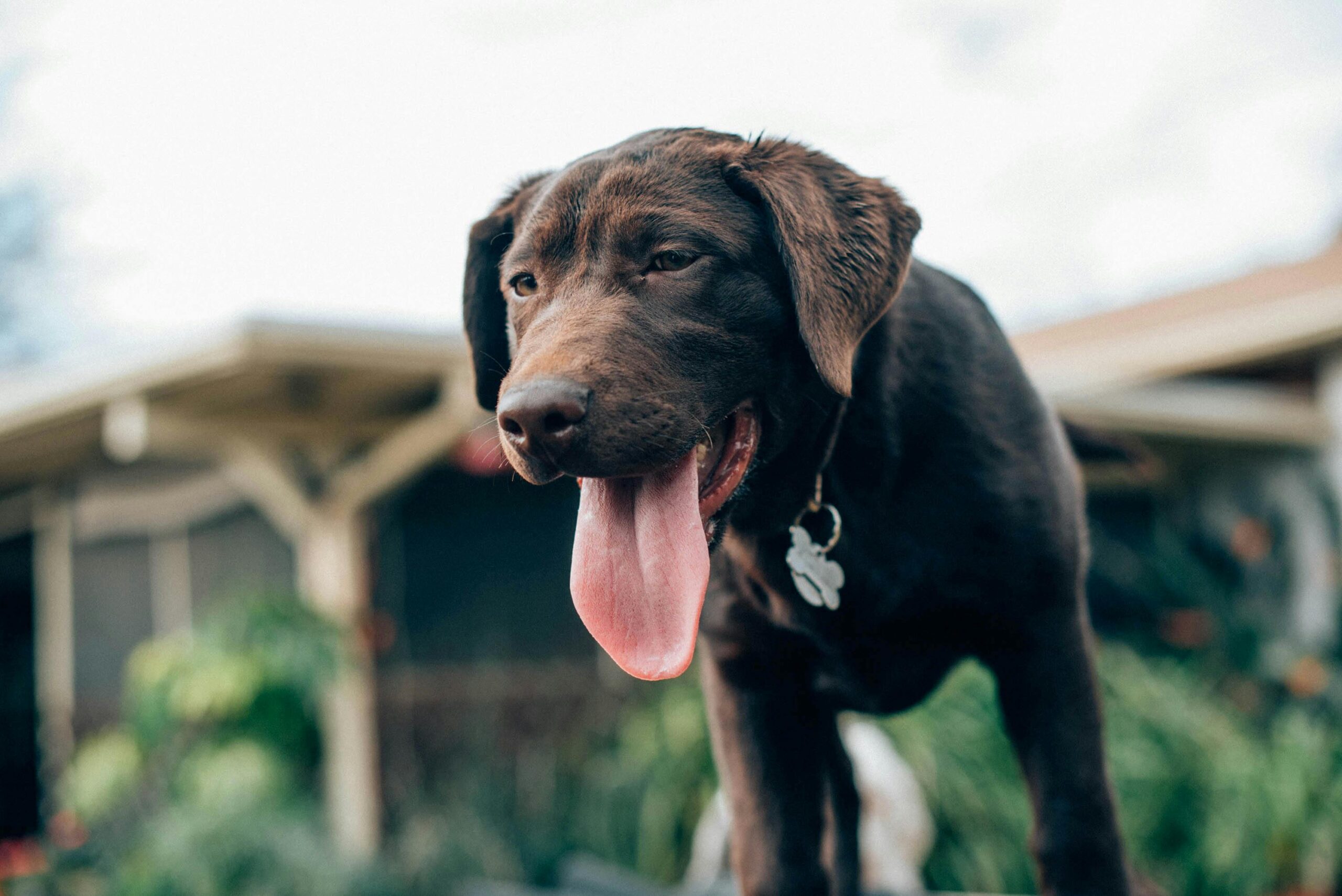
🐶 Why Heatstroke in Dogs Is a Serious Emergency Dogs don’t sweat like humans — they cool down primarily by panting. When the temperature rises and they can’t release heat fast enough, they risk overheating. Heatstroke in dogs can escalate quickly and fatally without prompt action. Whether it’s a hot walk, a long car ride, or just a sunny backyard, knowing the signs and what to do can literally save your dog’s life. 🚨 Common Signs of Heatstroke in Dogs Watch for these symptoms, especially in summer or during physical activity: 1. Excessive Panting Heavy, rapid panting is the first warning sign that your dog is too hot. 2. Drooling Thick, sticky saliva or excessive drooling is often a red flag. 3. Red or Pale Gums Check their gums — bright red, pale, or even bluish gums can signal heat distress. 4. Lethargy or Weakness If your dog seems weak, wobbly, or unusually tired, they may be overheating. 5. Vomiting or Diarrhea Often accompanied by drooling and restlessness. 6. Disorientation or Collapse In severe cases, dogs may collapse, appear dazed, or have seizures. 🧊 What to Do Immediately If you suspect your dog is suffering from heatstroke, act fast: ✅ Step 1: Move to a Cool, Shady Area Get them out of the sun and away from the heat. ✅ Step 2: Offer Cool (Not Cold) Water Let them drink small amounts — avoid forcing it if they’re not interested. ✅ Step 3: Cool Their Body Wet them down with cool water (NOT ice water) — especially the belly, paws, and armpits. Use fans to speed up cooling. Wrap them in damp towels. ✅ Step 4: Go to the Vet Immediately Even if your dog seems to recover, internal damage from heatstroke can be deadly. Always have them checked by a vet. 🐾 Dogs Most at Risk Certain dogs are more prone to heatstroke: Flat-faced breeds (Pugs, Bulldogs) Seniors and puppies Overweight dogs Dogs with thick coats or respiratory issues 🧰 Helpful Products to Prevent Heatstroke You can mention or link to these types of Amazon affiliate products (if you use affiliate links): Cooling vests or bandanas Portable water bottles Cooling mats Car seat fans or crate fans Shade tents for outdoor dogs 🧠 Final Reminder Heatstroke isn’t just a “summer thing.” It can happen indoors, in parked cars, or during overexertion. Always monitor your dog, and when in doubt — cool them down and call the vet.
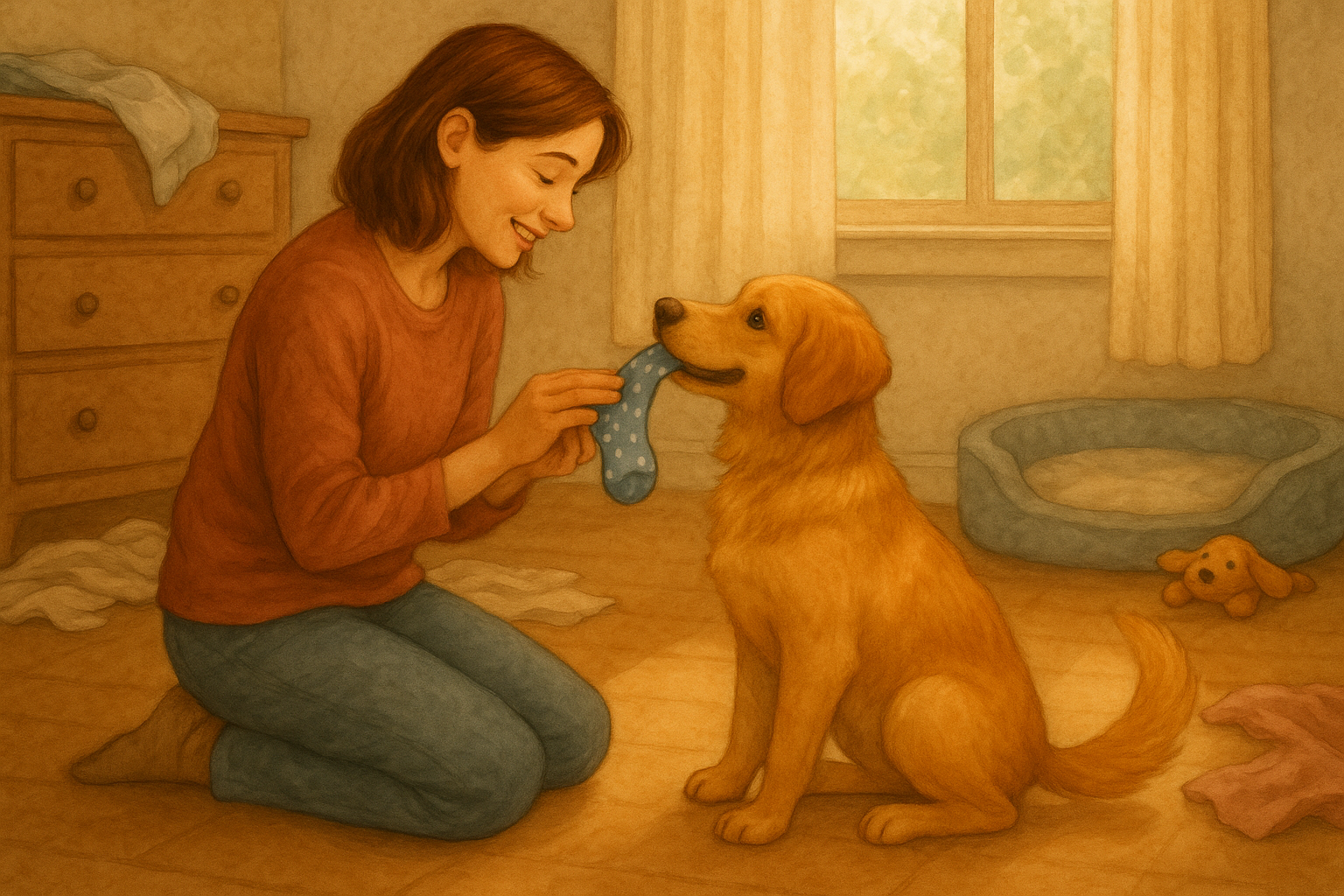
There’s something magical about socks. They’re warm, they smell like home, and they’re everywhere. Under the couch. Behind the laundry basket. Once, I even found one in the backyard. A treasure trove—each one a soft little puzzle just waiting to be claimed. But this sock was different. It was early morning. The house was still, filled with that fresh-sunlight smell. She was running around like she does on Mondays, hair up, shoes half-on, keys in her mouth like they were a chew toy. She couldn’t find the sock. Not just any sock—the blue one with little white dots. Her “lucky pair,” she always says. The ones she wears when she needs confidence, like when she goes to talk to scary humans at work. “Bailey, have you seen it? Please don’t tell me you took it again…” Guilty. But not this time. I tilted my head and trotted into the bedroom. Nose down. Sniff sniff. Past my toys. Past the cozy spot under the bed where I sometimes hide treats. And there it was—half-tucked under the dresser like it didn’t want to be found. I grabbed it carefully, like it was a prize. No chewing. No slobber. Just a perfect sock rescue. I padded into the hallway, tail wagging like a flag in the wind. When she saw me, she gasped. “You found it?!” I dropped it at her feet and sat tall, chest puffed out like a superhero in a dog’s body. She knelt down, ruffling my ears. “Good girl, Bailey. What would I do without you?” And then—this part I loved—she kissed the top of my head and gave me a new squeaky plush. One of the soft ones with the funny noise inside. I carried it proudly all the way to my bed by the window, the one where the morning sun pools like a blanket. I watched her leave, sock secure on her foot, heart feeling oddly full. That night, I found the sock again—this time on the floor next to the laundry basket. I didn’t steal it. I just curled up next to it and fell asleep. Because sometimes, the things we love the most are the ones that remind us of them.
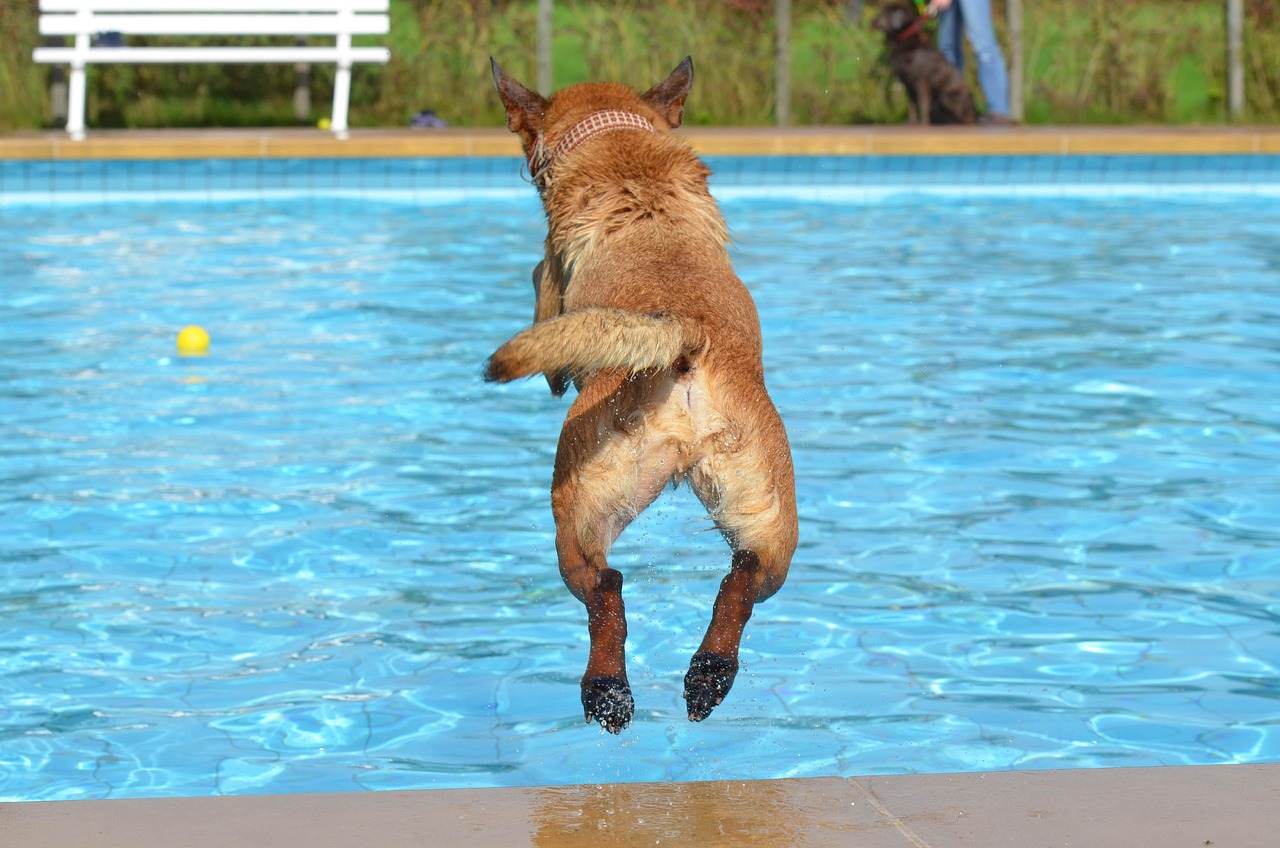
Summer brings sunshine, beach days, and outdoor adventures — but for our furry friends, it can also bring risks like dehydration, heatstroke, and paw burns. Whether you’re spending summer in your backyard or traveling with your pup, these 7 essential tips will help keep your dog safe, cool, and happy all season long. 1. Hydration Is Everything Just like us, dogs need more water in the summer. Always carry fresh water when heading outdoors and place multiple water bowls around the house. 💡 Pro Tip: Use a non-spill travel water bottle designed for dogs during walks or hikes 2. Walk During Cooler Hours Avoid walking your dog during the hottest part of the day (usually 11 AM–4 PM). Early morning or after sunset is safest. If you must go out, walk on grass or shaded paths — hot pavement can burn paws. 🔥 Try the “7-second rule”: place your hand on the pavement. If it’s too hot for your hand, it’s too hot for your dog. 3. Never Leave Your Dog in a Hot Car Even a few minutes in a parked car can be fatal. Temperatures inside rise rapidly, even with windows cracked. Always take your dog with you or leave them at home with proper ventilation and water. 4. Watch for Signs of Overheating Common symptoms of heatstroke in dogs include: Excessive panting Drooling Vomiting Weakness Collapse 🚨 If you notice any of these signs, move your dog to a cool area immediately, offer water, and contact your vet. 5. Protect Against Fleas, Ticks & Mosquitoes Warm weather = bug season. Use a vet-approved flea & tick prevention method — whether it’s a collar, chew, or topical treatment. ✅ Consider pairing it with a mosquito-repelling dog vest or natural spray during evening walks. 6. Provide Shade and Cooling Gear If your dog loves to sunbathe, make sure there’s a shaded area they can retreat to. Indoors, turn on fans or AC. Outdoors, try: Cooling mats or pads Portable dog pools Cooling vests or bandanas These products are not only fun but help prevent overheating during play. 7. Watch Out for Seasonal Allergies Grass, pollen, and insects can cause itching, sneezing, or even hot spots. If your dog shows signs of allergies, talk to your vet about antihistamines or special shampoos. 🛁 Bathing your dog more frequently with an oatmeal or anti-itch shampoo can also help. 🌞 Final Thoughts Summer should be a time of fun — not danger — for your pup. With just a little extra planning and the right products, you can make sure your dog enjoys the season just as much as you do.

I knew something was wrong the moment the wind changed. The sky outside the window had been sulking all day, turning darker by the hour. I’d spent the afternoon curled on the couch, ears twitching with every creak of the house. Even my favorite squeaky duck couldn’t distract me. That kind of quiet—the heavy, tense kind—always makes my chest feel tight. When the first boom came, it wasn’t like anything I’d heard before. It wasn’t like the blender, or the vacuum monster. It was deeper—like the whole sky barked at once. I jumped. I mean really jumped. My paws scrambled on the hardwood as I darted under the coffee table. My tail curled tight against my belly. I didn’t care how it looked. The sky was angry, and I wanted no part of it. Then the lights flickered. A second boom followed. The house gave a little shudder. My heart raced so fast I could feel it thumping in my ears. I let out a soft whine, not on purpose. My body did it for me. That’s when I saw her. She came into the room barefoot, in those soft pants she wears at night. Her face was gentle, eyes calm—even as the world outside roared. She didn’t say anything at first. Just knelt beside the table and reached for me with slow hands. I didn’t move. I couldn’t. “I got you, Bailey,” she whispered. She disappeared for a moment and came back with my blanket—the warm one. The soft one that smells like naps and belly rubs. I love that blanket. She wrapped me in it and cradled my head like I was made of something fragile. She didn’t pull me out. She waited, crouched down there with me, thunder and all. The storm didn’t care. It kept shouting. Loud cracks, long growls, pounding rain. But somehow, with her hand resting gently on my back, it felt less like the world ending and more like a bad dream. Eventually, she coaxed me out. We made our way to the bedroom, one pawstep at a time. Instead of putting me in my usual spot, she moved my bed right next to hers—close enough for my nose to touch the edge of her mattress. She even tucked my blanket around me like I was one of those tiny humans in the TV shows. “Just one night, storm baby,” she said softly, brushing my ear. I curled into a ball, but sleep didn’t come easy. Every time thunder rolled across the sky, my body tensed again. My eyes stayed open longer than I wanted. But every time, she’d reach her hand down. Just a touch. That’s all it took. At some point, I fell asleep with her fingers still resting gently on my paw. I guess even when the sky roars, you can feel safe—if someone stays with you until the storm is gone.
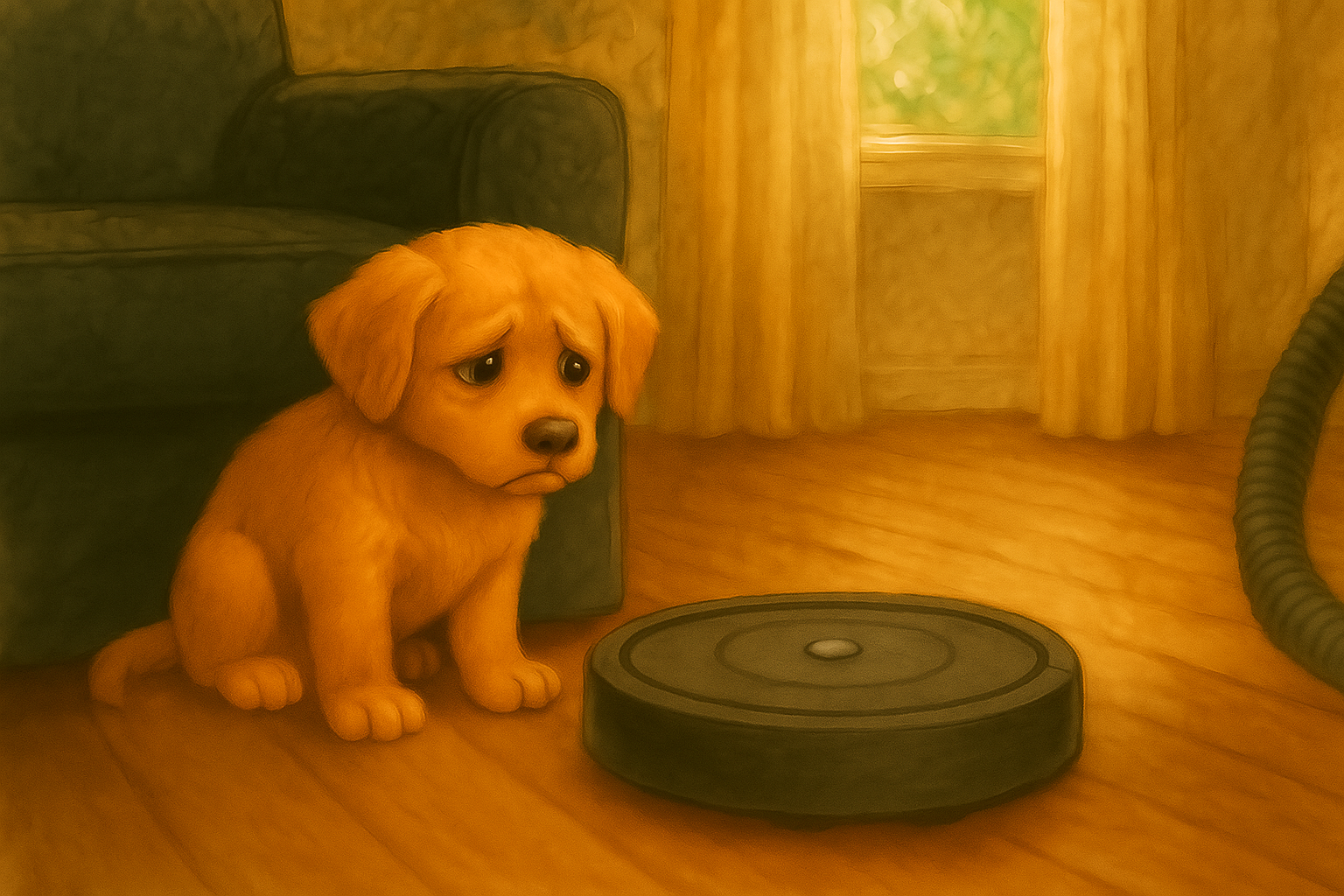
By week two, I’d grown used to the sound of my name. “Bailey,” she’d say softly as I walked by.“Bailey,” when she placed food down.“Bailey,” when I pressed my head into her palm without realizing. It wasn’t just a sound anymore. It meant safety. Belonging. Me. But on day nine… everything changed. It started with a click.Then a hum.Then a roar. I bolted behind the couch. The floor monster had awakened. She called it “the vacuum.” I called it betrayal. It growled and ate everything in its path — invisible crumbs, a leaf I’d lovingly brought in, even the corner of my toy giraffe. And she followed it willingly, pushing it around like some kind of leashless beast. My tail vanished beneath me. I didn’t bark. Didn’t growl. Just… watched. Trembled. Waited for the growling to stop. She noticed. That night, after the vacuum went back into its cave (a hall closet), she sat on the floor again. This time with a bag of calming peanut butter chews. She didn’t offer them like a bribe. Just left one near my bed. And waited. I didn’t take it right away. But I sniffed it later, quietly. Then again. Then tasted. I liked it. I liked her more. The next day, the vacuum came out again — but this time, I had a chew before it roared. I still hid. But I peeked out. The day after that? I watched from the other room. By the end of the week, I could stay in the same space, curled on my orthopedic dog cushion while it did its weird floor thing. She noticed. And that night, she placed her hand on my back — not asking for anything. Just being there. I didn’t move away. I think that meant something.